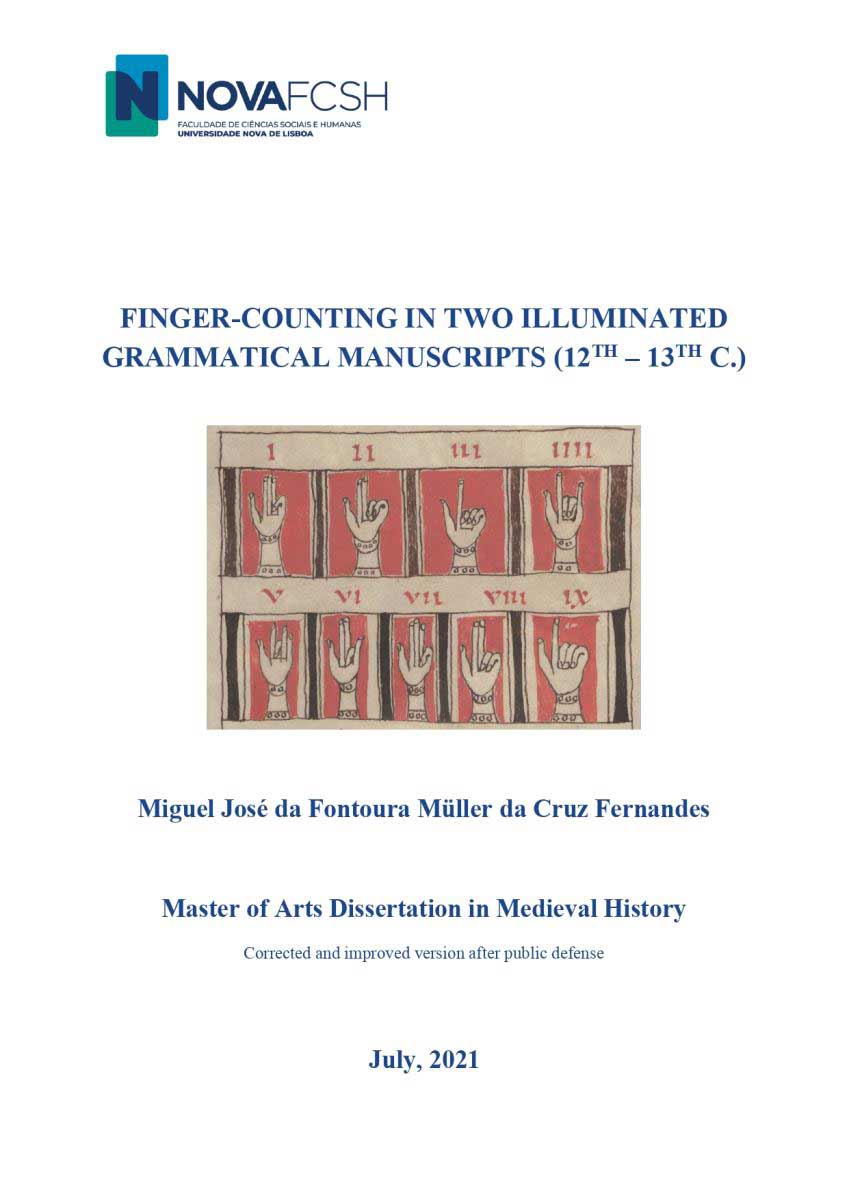Best Master’s Degree Thesis Award: Finger-counting in Two Illuminated Grammatical Manuscripts (12th – 13th C.) – Miguel Fernandes

Within the scope of the IEM initiative for new support and opportunities, and with the aim of supporting researchers integrated or eligible for integration, the prize for the best Master’s Degree thesis was awarded to Miguel Fernandes for his work “Finger-counting in Two Illuminated Grammatical Manuscripts (12th – 13th C.)“.
The IEM considers it essential to highlight the work carried out by the academic community, thus raising the profile of the commitment and merit of the Master’s Degree students at this research unit. Thus, within the framework of the Multi-Year R&D Unit Funding Contract (2020-2023) signed between the Foundation for Science and Technology, I.P. and NOVA University (IEM NOVA FCSH), this award grants the winner a Best Master’s Degree Thesis Certificate and €750 (attributed in the form of Missions (transportation, accommodation, enrolments in scientific meetings, among others) and/or the acquisition of Goods and Services (translations, revisions, material analysis, among others) that allow for the development of knowledge and ongoing research.
Abstract of the winning thesis:
“In Greco-Roman antiquity, a sophisticated digital counting system was developed and in use through to the Middle Ages. This system made it possible to count even large quantities using only fingers. In the early Middle Ages, this system gave rise to a pictorial tradition which lasted for centuries: illuminated manuscripts with depictions of numerical gestures circulated throughout Europe in large numbers throughout the Middle Ages. There is no doubt that illuminated manuscripts with finger counting carried great cultural and intellectual weight in the Middle Ages. This is evident by the peculiar form of their images, the ubiquity of the finger system in medieval society, and the diffusion and dynamism of the manuscript tradition. However, this tradition remains largely unexplored. Not only is any comprehensive comparative analysis yet to be done, but many sources have themselves not yet been examined. This dissertation analyses two hitherto poorly-studied Portuguese grammatical manuscripts from the 12th-13th centuries. Although these codices include images of finger counting – typically associated with arithmetic and astronomy – they are grammatical compilations. To adequately assess this apparent deviation, this study contextualises the codices in the cultural and intellectual panorama of Portuguese and European coeval monasticism. As this dissertation reveals, the finger system was a multi-purpose medium that traversed disciplinary boundaries and of relevance even for the teaching of grammar. Moreover, these finger counting images are steeped in rhetorical devices, including a series of visual puns – functioning as “visual etymologies”.
Portuguese codices are thus a suitable framework for these images. The nature of the problem under study requires a multidisciplinary approach, which benefited from art history, Latin, neuroscience, mathematics, computer science, and palaeography”.